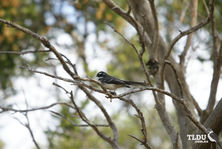
Shoppers Feedback:
Jan 17, 2017
Hello Ros,
I have now paid the invoice, but I would like to write to you just to say a big THANK YOU for getting me the Penguin!
The ChatterMate Penguin became a nice memory for me when I was in New Zealand, and I am so greatful to you for arranging so that I could have it! :-)
Thank you so much!!!!!!!!!!!
Regards,
Malin
Hi Ros,
Many thanks for your very kind email. I really appreciate your prompt reply!
I appreciate your advice regarding the decorations and customs. These are a gift for my daughter’s exchange student family so when she returns home on the weekend I will show her and see if she loves them as much as I do!
Thanks so very much again - I am truly grateful for your kind assistance.
Kind Regards
Bernadette
Ros,
Thanks again for the great customer service. It's a refreshing change!
Best regards,
Trevor
Hey Roz,
Thank you for your emails. Just loved my first order. The cute little Aussie bush critters are going to be used for an office Christmas decoration. My colleagues also liked them and talked about making an order to your site. I'll send you a photo when completed.
I'll be ordering more to send to my daughter's host family in America.
Fabulous service from you.
Kind regards,
Michelle
Thankyou. Order arrived today. One very happy grandson with his new beastly binoculars.
Regards,
Irene
- Home
- Wild Wonders
- Shop
- Aromas of Australia
- Australian Made
- Books
- Book Marks
- Christmas Decoration Sale
- Christmas Decorations
- Clocks
- Drink Holders
- Garden & Outdoor
- Gift Wrapping & Cards
- Home & Giftware
- Jewellery
- Keyrings
- New Products
- Pencils & Pen Holders
- Photo Frames
- Plush Toys
- Plush with Sound
- Sheepskin Rugs
- Stationery
- Stone Carvings
- Toys & Games
- Travel Goods
- Wedding
- Wild Figurines
- Wildlife Safety Products
- Wind Chimes
- Wine Charms
- View All Products
- Wildlife
- Australiana
- Explore
- Contact Us
Grey Fantail

Quick Facts
| Length: | 15 cm |
| Height: | - |
| Weight: | 9 grams |
| Colour: | Grey above, white eyebrow, throat and tail edges. |
| Habitat: | Most treed habitats |
| Food: | Flying insects |
| Predators: | - |
| Status: | Critically endangered in NT. Secure in all other states and territories in Australia |
The Grey Fantail is most easily recognised by its constantly fanned tail and agile aerial twists and turns. Both sexes are similar in appearance: grey above, with white eyebrow, throat and tail edges. This species is quite inquisitive and will closely approach an observer.
The Grey Fantail is found throughout Australia.
The Grey Fantail is found in most treed habitats.
Appears to undergo a partial northern migration during winter.
The Grey Fantail feeds on flying insects, which it catches by chasing them from the edge of foliage at all levels in the canopy.
The Grey Fantail builds its nest in a thin tree-fork, unusually between 2 and 5 metres from the ground. It is made of fine grass bound together with large amounts of spider web. The bottom of the nest is drawn out into a long stem, resembling that of a wine-glass. Both parents share nest-building, incubation of the eggs and feeding of the young when they hatch.
The Grey Fantail occasionally visits densely-planted urban gardens, particularly during the winter migration. Often makes use of eucalypt trees.
Last Updated: Wednesday 17th July, 2013
BUSH e-TELEGRAPH
Signup for our monthly newsletter the "e-Telegraph"
Quick Links
Home | The Beginning | About The Land Down Under | Wild Wonders | Advertise on Wild Wonders | Christmas Decoration Sale | Christmas Tree Decorations | Drink Holders | Plush with Sound | Stone Carvings | Wildlife Wine Charms | Freebies | Australian Wildlife | Help Our Wildlife | Australiana | Photo of the Month | Explore The Land Down Under | Contact Us | Legal Notices


